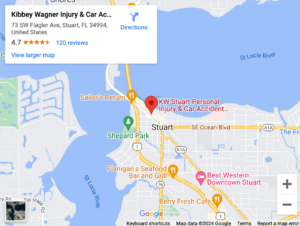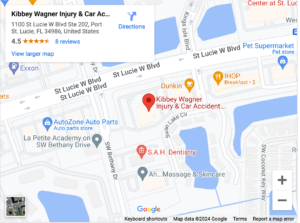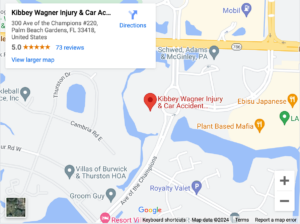
While some car accidents and other personal injury incidents cause injured victims to suffer only minor scrapes and bruises, others leave victims with painful injuries like broken bones. Broken bones can lead to expensive medical bills, extensive time off work, and other significant losses.
If someone else caused your injuries, you should not have to shoulder the consequences alone. A personal injury lawyer can help you with your broken bone injury claim and coordinate your care.
How Does a Broken Bone Occur?
A broken bone happens when more pressure is applied to a bone than it can withstand. Any bone in the body can potentially break.
How Common Are Broken Bones?
More than six million people break a bone each year in the United States. Bones that are most likely to break include:
- Collarbone
- Hip bone (most common fracture for people over age 75)
- Wrist (most common fracture for people under age 75)
- Arm
- Ankle
- Foot
- Toe
- Spine
- Leg
Certain individuals are more likely to break bones than others, including men, young children, people with bone conditions like osteoporosis, and older people.
What Are the Common Causes of Broken Bones?
The leading causes of broken bones are trauma, osteoporosis, and overuse.
Accidents that sometimes lead to broken bones include:
- Bicycle accidents
- Car accidents
- Defective products
- Motorcycle accidents
- Pedestrian accidents
- Truck accidents
- Slip and fall accidents
We represent personal injury victims in all of the above accident types.
Types of Broken Bones
There are various types of broken bones you may suffer from, including:
- Open fracture – A broken bone that punctures the skin
- Closed fracture – The bone or other piercing material does not break the skin
- Stress (hairline) fracture – A break in the bone that develops because of repeated pressure against the bone
- Displaced fracture – The bone is broken in two or more pieces which move out of alignment
- Comminuted fracture – The bone shatters in three or more pieces
- Non-displaced fracture – The bone breaks, but it remains in alignment
- Transverse fracture – This fracture occurs on a horizontal line
- Oblique fracture – This fracture occurs at an angle or curve
- Avulsion fracture – A piece of bone is separated from the main bone
- Linear fracture – A break occurs that is parallel to the long axis of the bone, but the break does not move the bone
- Spiral fracture – The bone twists at the breaking point
- Stable fracture – The broken ends of the bones line up
Seeking prompt medical treatment is the first step to determining the type of broken bone you have sustained.
How Do I Know If I Have a Broken Bone?
In some cases, it might be immediately apparent that you have a broken bone because it is facing the wrong direction or protruding through the skin. In other cases, the injury may not be obvious.
Here are some signs to look for in a broken bone:
- Inability to move the injured area
- A popping or cracking sound at the time of the injury
- Pain, swelling, and/or tenderness around the injured area
- Pain that worsens with movement
- Bruising
- Dizziness
- Skin hot to the touch
If you are experiencing any of these symptoms and suspect a broken bone, seek prompt medical attention.
How Are Broken Bones Treated?
Broken bones are treated differently depending on where the injury occurred, the cause of the break, the severity of the injury, and the type of break it is.
One or more of the following methods may be used to treat broken bones:
- Immobilization – Your bone needs to stay in place to heal properly. Your doctor may help you to immobilize it by requiring you to wear a splint or cast.
- Realignment – More severe breaks often require a realignment of your bones. This is a non-surgical procedure in which your medical provider pushes your bones back in place.
- Surgery – Some broken bones require surgery. Different techniques your surgeon may use include:
- Internal fixation – With this surgical technique, your surgeon realigns your bones to their correct position and secures them in place with rods, plates, and screws, or pins and wires.
- External fixation – With this surgical procedure, your surgeon puts screws in the bone on either side of the fracture and connects them to a brace or bracket outside your body.
- Arthroplasty – This procedure is used if you fracture a joint. Your surgeon removes the broken joint and replaces it with an artificial one.
- Bone grafting – This technique involves surgically inserting additional bone tissue to help the fractured bone realign.
You and your doctor will discuss your condition and possible treatment.
What Types of Compensation Can I Recover for a Broken Bone?
Broken bones can be expensive to treat and may require you to pay for the following expenses:
- Emergency care
- Hospital stays
- Doctor visits
- Surgery costs
- Rehabilitation
- Physical therapy
- Occupational therapy
- Long-term care
- Complications arising from the fracture
Additionally, you can seek compensation for your lost wages, reduced earning capacity, property damage, and other expenses you incur. Pain, suffering, and mental anguish damages can also be awarded.
How Long Do I Have To File a Claim for a Broken Bone in Florida?
You have a limited amount of time to file a lawsuit after you suffer a personal injury, which is known as the statute of limitations. In Florida, the statute of limitations is just two years from the date of injury for most cases based on negligence.
Contact Our Experienced Stuart Personal Injury Lawyers for Help Pursuing Compensation for a Broken Bone
Have you recently suffered a broken bone in an accident in which you believe someone else’s negligence was to blame? If so, you could be entitled to compensation for the harm you’ve suffered.
Our Stuart personal injury attorneys at Kibbey Wagner Injury & Car Accident Lawyers provide a free consultation to discuss your legal rights and options. We have worked with people who have suffered various types of injuries, including broken bones.
Contact our Stuart law firm today or call (772) 444-7000 for a free case review.




